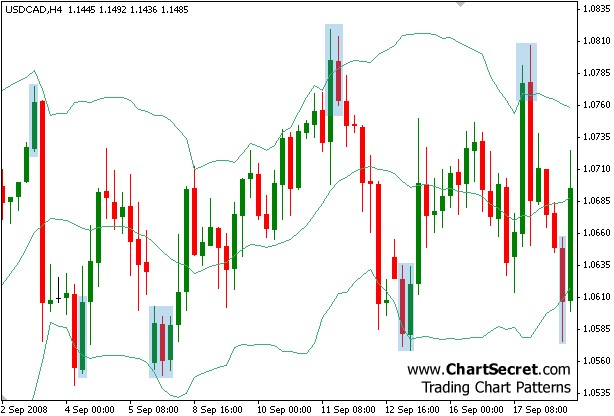Using Bollinger Bands to Improve Your Trading
Post on: 22 Июль, 2015 No Comment

Using Bollinger Bands to Improve Your Trading
Bollinger bands were originally developed and popularized by John Bollinger in the early 1980s. The technical concept of using price envelopes or bands and moving averages was not new, but Bollinger introduced significant improvements in his bands that has improved their usefulness and made Bollinger bands one of the most popular indicators used by technical analysts in any capital market.
This article and video will introduce the indicator and focus on two common uses for Bollinger bands and how they can be used to improve your trading.
[VIDEO] Using Bollinger Bands
How the Indicator is Calculated
First, Bollinger bands start with a simple moving average. The most common period for this moving average is 20-periods.
A shorter moving average will be more sensitive to short term changes in price while a longer term moving average will be more smooth and less volatile.
It is usually a good idea to stick with the default period when learning to use the indicator and wait to begin experimenting once you have a firm understanding of how to use the indicator in your own trading.
You can see a chart of the stock SPY below with a 20 period moving average applied.
Daily Chart of SPY
Second, the bands above and below the moving average will use the same number of periods that the moving average does, however, these bands are not an average of that data. The bands are set two standard deviations away from the moving average.
Because the standard deviations will increase when the market is volatile and shrink when the market is less volatile, the width of the bands will change from day to day.
In this way, Bollinger bands can show where prices are relative to historical volatility. If prices meet or exceed the upper band then prices are more volatile to the upside than they have been over the last 20-periods.
The same is true in reverse if prices are near or beyond the lower Bollinger band. You can see the two bands above and below the moving average in the chart of SPY below. At point A prices are very volatile and the bands are increasing in width. Point B illustrates how the bands will narrow when volatility is lower.
Daily Chart of SPY
The bands themselves do not generate trading signals but can help traders understand where prices and volatility are now relative to where they have been in the recent past. Lets take a look at how this information can be used to adjust trades or to take action.
Using Bollinger Bands to Identify Price Extremes
Within a given trend, prices will periodically correct, or retrace, before continuing. It is very common for these retracements, or corrections, to stop at the upper Bollinger band in a downtrend or the lower Bollinger band in an uptrend.
These extremes represent price levels at which you could initiate a new position in favor of the prevailing trend. Similarly, these extremes may indicate a high risk environment for short-term counter-trend trades.
In the chart of Google (GOOG) below, you can see this retracement and continuation behavior during a downtrend. As prices hit the upper Bollinger band, they were at high risk of reversing in favor of the previous trend. This is common and can be an effective way to identify periods of high risk or trading opportunities.
Daily Chart of GOOG
Bollinger Bands Can Identify Periods of Emerging Volatility
The example above illustrated how Bollinger bands can be used to identify potential changes in price. Bollinger bands can also be used to identify periods when volatility changes are likely.
Bollinger bands do this by showing when volatility is reaching extreme lows, relative to its recent history. Technicians refer to these low volatility periods as consolidations and place their trades in line with the new trends that form when prices break out and volatility comes back to the market.
Bollinger bands show these periods of extremely low volatility, or consolidations, by moving toward each other and squeezing together. Using Bollinger bands like this makes it very easy to visually identify those periods when the market is more likely to breakout in the near term.
This is important from a risk control perspective as well as a way to identify trading opportunities. Option traders may use these squeezes as a signal for long straddles or strangles, which need high volatility to be profitable. You can see a great example of a squeeze on the SPDR Gold Trust ETF (GLD) below.
Daily Chart of SPDR Gold Trust (GLD)
Bollinger bands are a popular technical tool that can convey a large amount of information about price changes and volatility visually. Learning to use Bollinger bands can help you improve the timing of your risk control and trade entries and exits.
Experiment with them yourself, and learn to apply them in your paper trading before using them in the live market.














